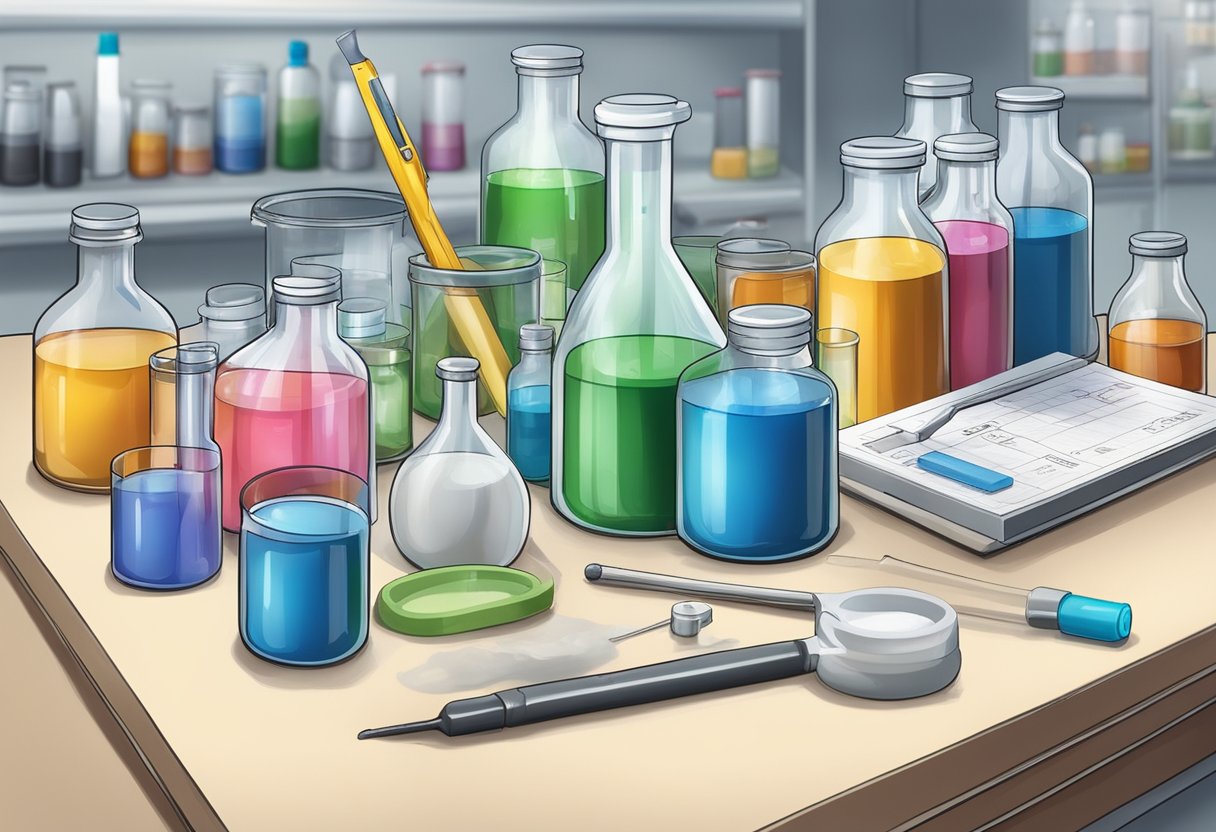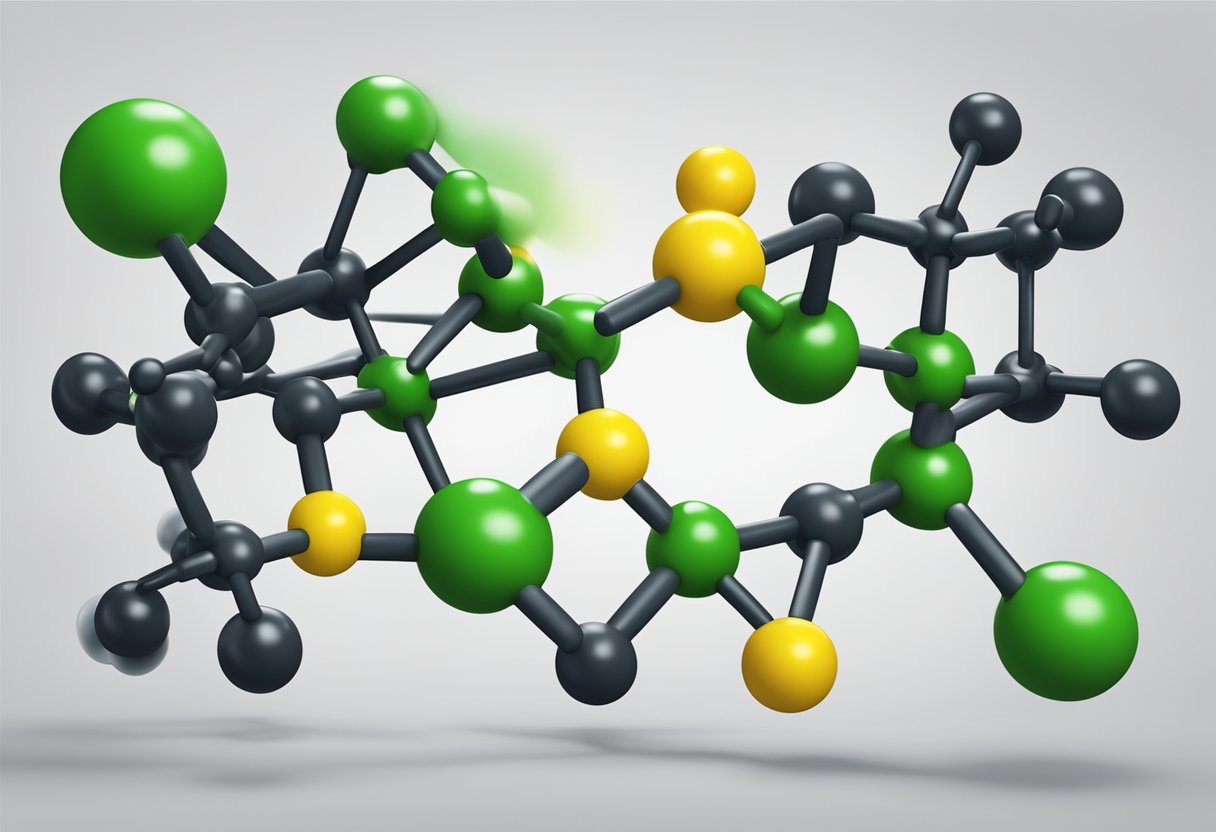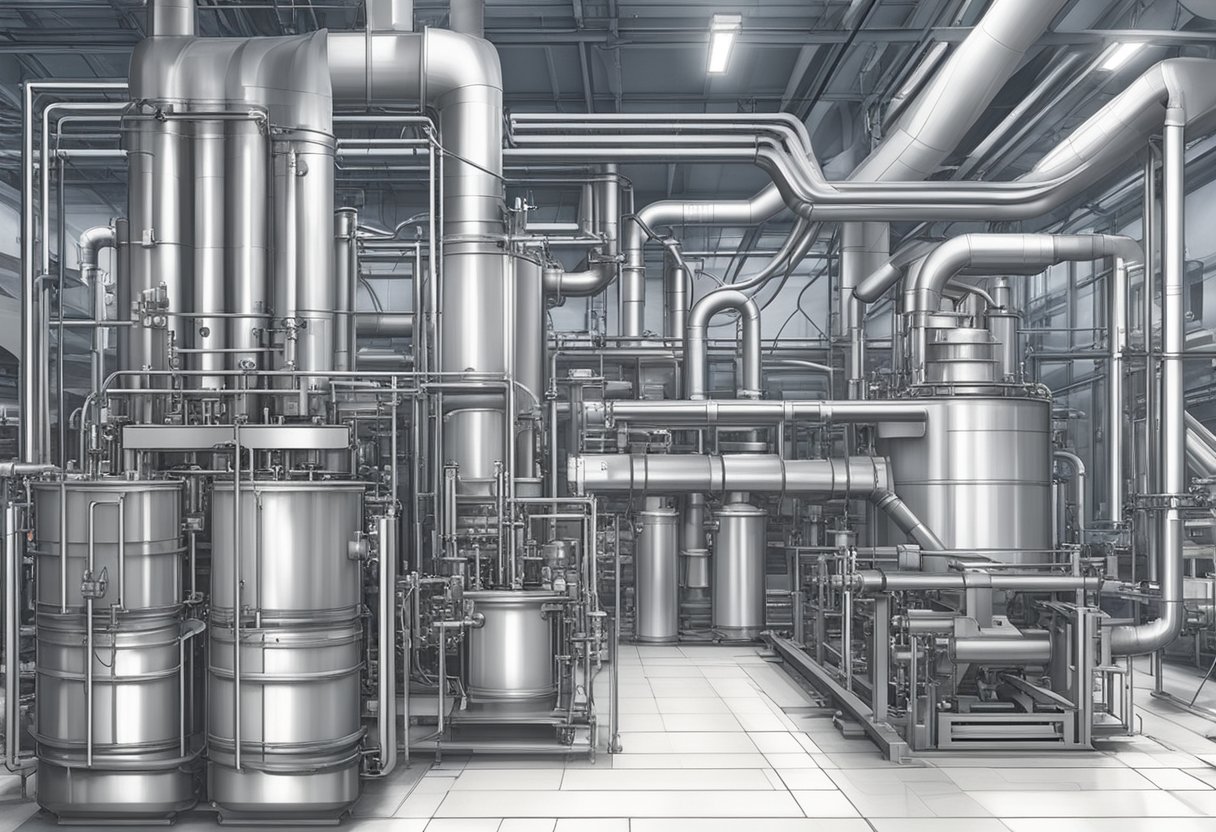Chlorosulfonated Polyethylene Synthetic Rubber: Properties and Applications
19/01/2024
Chlorosulfonated polyethylene synthetic rubber, also known as CSPE or Hypalon, is a type of synthetic rubber that is widely used in various industries due to its excellent chemical and physical properties. It was first developed in the 1950s by DuPont, and has since become a popular choice for applications that require resistance to chemicals, weathering, and extreme temperatures.

CSPE is a unique type of synthetic rubber that is produced by chlorination and sulfonation of polyethylene. This process results in a material that is highly resistant to chemicals, ozone, and UV radiation. Additionally, CSPE has excellent mechanical properties, including high tensile strength, tear resistance, and abrasion resistance. These properties make it a popular choice for applications such as roofing membranes, electrical insulation, and industrial hoses.
Chemical Structure and Properties

Chlorosulfonated polyethylene (CSM) is a synthetic rubber produced by the chlorination and sulfonation of polyethylene. The resulting material has a unique combination of properties that make it suitable for a variety of applications.
The chemical structure of CSM consists of a backbone of polyethylene chains with chloro and sulfonyl groups attached to the polymer backbone. The amount of chlorination and sulfonation can be tailored to achieve specific properties, such as increased chemical resistance or improved weatherability.
CSM has a number of desirable properties, including good resistance to ozone, weathering, and chemicals such as acids and bases. It also has good mechanical properties, including high tensile strength and tear resistance. Additionally, CSM has good low-temperature flexibility and can maintain its properties over a wide range of temperatures.
CSM is commonly used in the production of industrial and automotive products, such as hoses, belts, and seals. It is also used in the production of roofing membranes, pond liners, and other products that require good weatherability and chemical resistance.
Overall, the unique combination of properties provided by CSM make it a valuable material for a variety of applications where resistance to chemicals, weathering, and mechanical stress are important.
Manufacturing Process of Chlorosulfonated Polyethylene

Chlorosulfonated polyethylene (CSM) is a synthetic rubber that is produced through a complex manufacturing process. The process involves the chlorination and sulfonation of polyethylene, resulting in a rubber material with excellent chemical and weather resistance properties.
The manufacturing process of CSM begins with the polymerization of polyethylene. The polymerization process is carried out in the presence of a catalyst, which initiates the reaction and forms long chains of polyethylene molecules. The resulting polyethylene is then chlorinated using chlorine gas, resulting in chlorinated polyethylene (CPE).
The chlorinated polyethylene is then sulfonated using sulfuric acid, resulting in chlorosulfonated polyethylene (CSM). The sulfonation process introduces sulfonic acid groups into the polymer chain, which enhances the chemical and weather resistance properties of the material.
After sulfonation, the CSM is washed to remove any residual sulfuric acid and then neutralized with an alkali solution. The neutralized CSM is then dried and processed into various forms, such as sheets, pellets, or powders.
The manufacturing process of pbat resin requires strict quality control measures to ensure consistent product quality. The quality of the raw materials, the reaction conditions, and the processing parameters must be closely monitored to ensure that the final product meets the required specifications.
In summary, the manufacturing process of chlorosulfonated polyethylene involves the chlorination and sulfonation of polyethylene, resulting in a synthetic rubber material with excellent chemical and weather resistance properties. The process requires strict quality control measures to ensure consistent product quality.
Applications and Uses

Chlorosulfonated polyethylene synthetic rubber (CSM) is a versatile material that finds numerous applications across various industries. The unique properties of CSM, such as excellent resistance to chemicals, ozone, and weathering, make it a popular choice for many applications.
One of the most common uses of CSM is in the production of industrial hoses, gaskets, and seals. The material’s resistance to chemicals and heat makes it ideal for use in harsh environments, such as chemical plants, refineries, and oil and gas facilities.
CSM is also used in the production of roofing membranes, pond liners, and other waterproofing materials. The material’s excellent resistance to weathering, UV radiation, and ozone makes it an ideal choice for outdoor applications.
In the automotive industry, CSM is used to manufacture various components, including fuel hoses, brake hoses, and seals. The material’s resistance to fuels, oils, and other automotive fluids makes it an excellent choice for these applications.
In addition to the above applications, CSM is also used in the production of wire and cable coatings, conveyor belts, and inflatable products, among others.
Overall, the unique properties of CSM make it a valuable material for a wide range of applications across various industries.
Mechanical and Physical Characteristics
Chlorosulfonated polyethylene (CSM) synthetic rubber is a versatile material that exhibits a unique combination of mechanical and physical characteristics. The following are some of the key properties of CSM:
- Tensile strength: CSM has excellent tensile strength, making it ideal for applications that require high durability and resistance to tearing and abrasion.
- Elongation: CSM has a high elongation at break, which means it can stretch without breaking. This property makes it suitable for use in applications that require flexibility and resilience.
- Chemical resistance: CSM is highly resistant to chemicals, including acids, alkalis, and oils. This property makes it ideal for use in environments where exposure to harsh chemicals is common.
- Weather resistance: CSM has excellent weather resistance, which means it can withstand exposure to UV radiation, ozone, and extreme temperatures without degrading.
- Low compression set: CSM has a low compression set, which means it can maintain its shape and size even after prolonged use under compression.
- Low permeability: CSM has low permeability to gases and liquids, which makes it useful in applications that require a high degree of impermeability.
Overall, the mechanical and physical characteristics of CSM make it a highly desirable material for a wide range of applications, including automotive, construction, and industrial applications.
Thermal Stability and Resistance
Chlorosulfonated polyethylene synthetic rubber is known for its excellent thermal stability and resistance properties. This synthetic rubber is capable of maintaining its properties even at high temperatures.
In addition, chlorosulfonated polyethylene synthetic rubber is highly resistant to heat aging, meaning it can withstand prolonged exposure to high temperatures without significant degradation. This makes it an ideal material for use in high-temperature applications, such as automotive and aerospace industries.
Furthermore, chlorosulfonated polyethylene synthetic rubber also exhibits excellent resistance to ozone, weathering, and chemicals, making it a versatile material for a wide range of applications. Its unique properties make it an excellent choice for use in seals, gaskets, hoses, and other rubber products that require high thermal stability and resistance.
Overall, chlorosulfonated polyethylene synthetic rubber is a reliable and durable material that can withstand harsh environments and extreme temperatures. Its thermal stability and resistance properties make it an excellent choice for a wide range of applications.
Chemical Resistance and Permeability
Chlorosulfonated polyethylene synthetic rubber is known for its excellent chemical resistance and low permeability to gases and liquids. The material is resistant to a wide range of chemicals, including acids, alkalis, and solvents. It is also resistant to ozone and UV radiation, making it suitable for outdoor applications.
One of the main advantages of chlorosulfonated polyethylene synthetic rubber is its low permeability to gases and liquids. This property makes it an ideal material for use in applications where gas or liquid containment is critical, such as in chemical storage tanks or pipelines. The material’s low permeability also means that it is an effective barrier against moisture, which can cause corrosion and other damage to metal components.
Chlorosulfonated polyethylene synthetic rubber is also resistant to swelling in the presence of oils and fuels. This property makes it a popular choice for use in automotive and aerospace applications, where exposure to oils and fuels is common.
Overall, chlorosulfonated polyethylene synthetic rubber is a versatile material with excellent chemical resistance and low permeability properties. Its unique combination of properties makes it an ideal choice for a wide range of applications, from chemical storage tanks to automotive components.
Processing and Fabrication Techniques
Chlorosulfonated polyethylene synthetic rubber is a versatile material that can be processed and fabricated using a variety of techniques. The specific method used depends on the intended use of the final product.
One common method of processing chlorosulfonated polyethylene synthetic rubber is extrusion. This involves melting the material and forcing it through a die to create a specific shape or profile. Extrusion is commonly used to produce tubing, gaskets, and seals.
Another method of processing chlorosulfonated polyethylene synthetic rubber is compression molding. This involves placing the material into a mold and applying heat and pressure to shape it into the desired form. Compression molding is commonly used to produce O-rings, gaskets, and other complex shapes.
Injection molding is another technique that can be used to process chlorosulfonated polyethylene synthetic rubber. This involves injecting the material into a mold under high pressure to create a specific shape. Injection molding is commonly used to produce parts for the automotive and electronics industries.
Chlorosulfonated polyethylene synthetic rubber can also be fabricated using techniques such as calendaring and coating. Calendaring involves passing the material through a series of rollers to create a thin, uniform sheet. Coating involves applying the material to a substrate to create a protective layer.
Overall, chlorosulfonated polyethylene synthetic rubber is a versatile material that can be processed and fabricated using a variety of techniques. The specific method used depends on the intended use of the final product, and careful consideration should be given to the properties of the material and the requirements of the application.
Additives and Formulations
Chlorosulfonated polyethylene (CSM) synthetic rubber is often blended with other materials to achieve specific properties. These materials can include fillers, plasticizers, curatives, and antioxidants.
Fillers are added to improve the mechanical properties of the rubber, including its strength and durability. Common fillers used with CSM include carbon black, silica, and calcium carbonate.
Plasticizers are used to increase the flexibility and softness of the rubber. They can also improve the rubber’s resistance to heat and chemicals. Common plasticizers used with CSM include phthalates, esters, and oils.
Curatives are added to initiate the cross-linking process that gives the rubber its elasticity and strength. Common curatives used with CSM include sulfur and peroxides.
Antioxidants are used to prevent the rubber from breaking down due to exposure to heat, oxygen, and other environmental factors. Common antioxidants used with CSM include phenols and amines.
Formulations of CSM can vary depending on the desired properties of the final product. For example, a formulation for a fuel hose may require a high level of resistance to fuel and oil, while a formulation for a gasket may require a high level of compression set resistance.
Overall, the additives and formulations used with CSM synthetic rubber can greatly impact its performance and suitability for various applications.
Environmental Impact and Sustainability
Chlorosulfonated polyethylene synthetic rubber is a material that has a significant impact on the environment. The production of this material generates a large amount of waste and pollution. The manufacturing process involves the use of toxic chemicals, which can have harmful effects on the environment and human health.
However, there have been efforts to improve the sustainability of chlorosulfonated polyethylene synthetic rubber. Manufacturers have implemented various measures to reduce waste and pollution, such as recycling and reusing materials. They have also developed more environmentally friendly production processes that use fewer toxic chemicals.
In addition, chlorosulfonated polyethylene synthetic rubber has many applications that contribute to sustainability. This material is used in the production of durable products such as tires, hoses, and seals, which have a longer lifespan than their non-synthetic counterparts. This reduces the need for frequent replacements and ultimately reduces waste.
Overall, while the production of chlorosulfonated polyethylene synthetic rubber has a significant impact on the environment, there have been efforts to improve its sustainability. Manufacturers have implemented measures to reduce waste and pollution, and the material has many applications that contribute to sustainability.
Regulations and Safety Standards
Chlorosulfonated polyethylene synthetic rubber is regulated by various organizations to ensure safety and environmental protection. The following regulations and safety standards should be followed when handling or using this material:
- Occupational Safety and Health Administration (OSHA) regulates the use of chlorosulfonated polyethylene synthetic rubber in workplaces. OSHA has set permissible exposure limits (PELs) for this material to protect workers from adverse health effects. Employers are required to provide appropriate personal protective equipment (PPE) and training to workers who handle this material.
- Environmental Protection Agency (EPA) regulates the disposal of chlorosulfonated polyethylene synthetic rubber. This material is considered hazardous waste and must be disposed of according to EPA regulations. Improper disposal can lead to environmental pollution and health risks.
- International Organization for Standardization (ISO) has set standards for the quality and performance of chlorosulfonated polyethylene synthetic rubber. These standards ensure that the material meets certain criteria for use in various applications.
It is important to follow these regulations and safety standards to prevent accidents, injuries, and environmental damage. Failure to comply with these regulations can result in fines, legal action, and reputational damage for the company.




